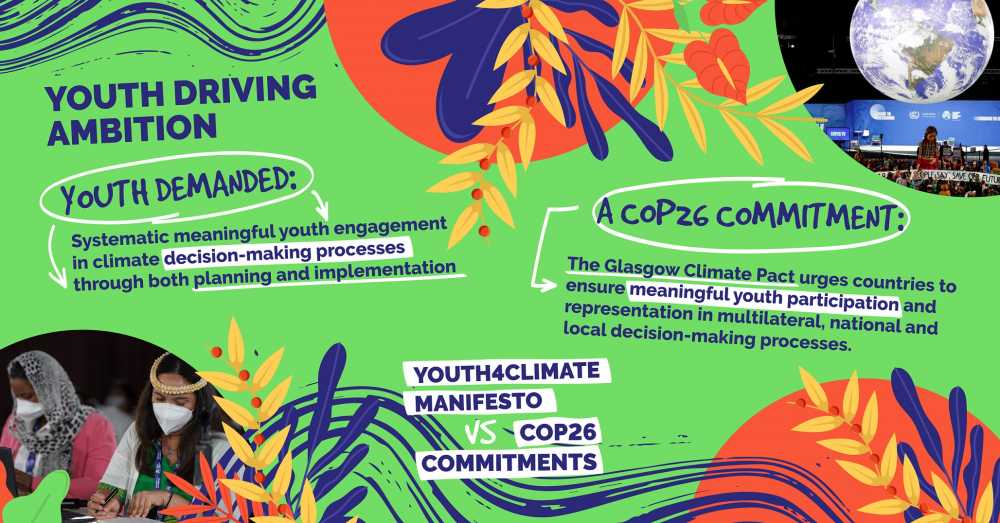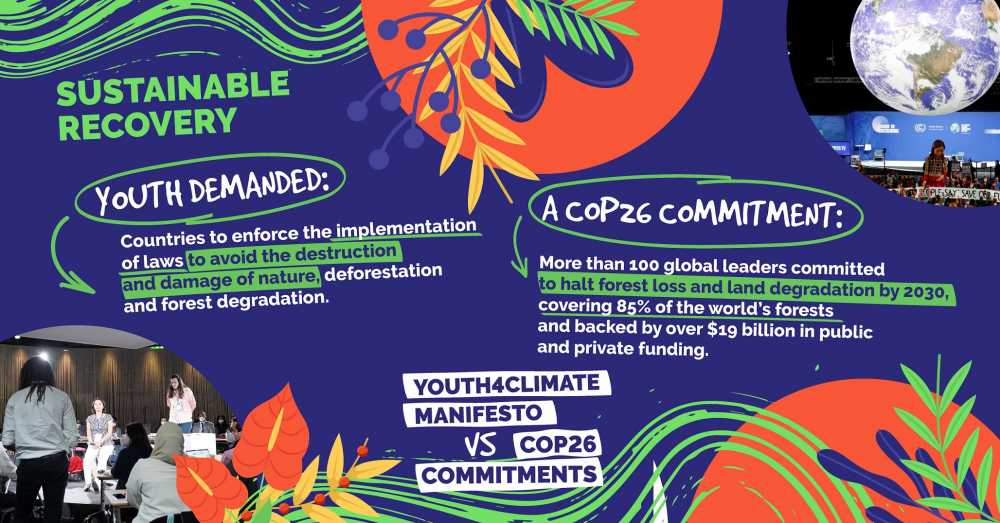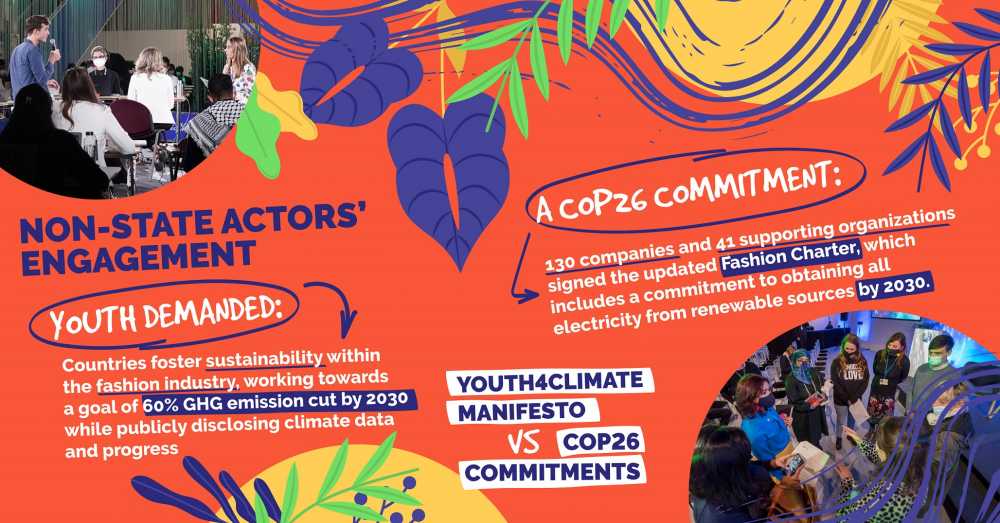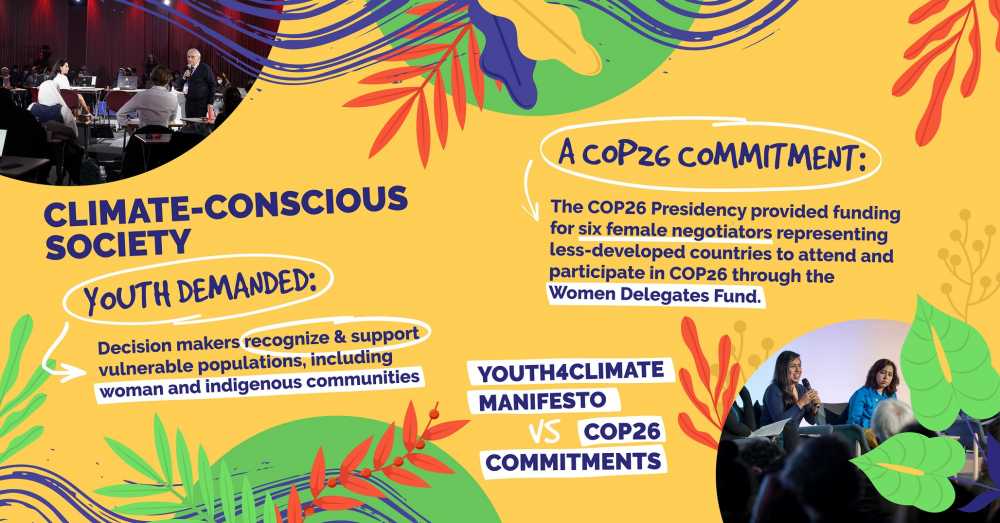
At the Youth4Climate: Driving Ambition summit in Milan, hundreds of young delegates from all over the world worked together to draft a seminal Youth4Climate Manifesto—a bold plan for climate action with demands across four thematic areas—that was brought to COP26 to precipitate concrete climate commitments from world leaders.
In this article, we examine how the policymakers and leaders who convened in Glasgow for the COP responded to the Youth4Climate Manifesto’s asks and ambitions with new pledges and action plans.
Banner image by Leigh Vogel, Connect4Climate.
Youth Driving Ambition
On the central theme of Youth Driving Ambition, the writers of the Youth4Climate Manifesto called on policymakers to open new avenues to young people and empower them to participate in the process of developing and implementing climate action. In response, the Glasgow Climate Pact included a call “to ensure meaningful youth participation and representation in multilateral, national and local decision-making processes.” Additionally, Italian Minister for Ecological Transition Roberto Cingolani announced at the COP that the Youth4Climate summit will henceforth be an annual event, giving young people a direct pipeline to the latest climate negotiations.
In particular, the Manifesto called for renewed commitment to elevating, respecting and acting on the voices of indigenous people, women, and the most vulnerable. At COP26, the Improved Marrakech Partnership for Enhancing Ambition incorporated this message into its charter along with a five-year plan emphasizing accountability to stakeholders. A number of countries, including Bolivia, Canada, Ecuador, the US, and the UK, made fresh commitments to Gender Action, investing in women’s leadership and initiating a policy of conducting gender breakdowns in all statistical climate analyses moving forward.







